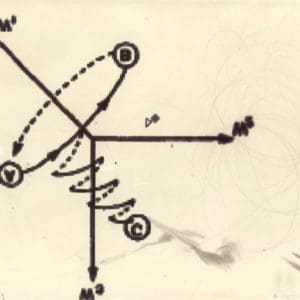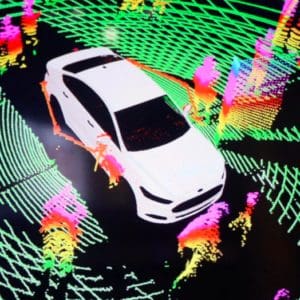MAX works closely with artistic teams to develop and present work. These artists presented and preformed at MAXlive 2021: The Neuroverse, a live arts festival pushing the limits of intelligence.

ELIXIR by Mar Hwa Wei
ELIXIR: Digital Immortality is an interactive and immersive performance based on a fictitious AI startup that offers digital immortality. ELIXIR explores the meaning of digital authenticity, identity, and legacy.

How Does Thinking Look Like? by Philipp Schmitt
The media makes us believe that AI looks like the Terminator or Hal 9000. It seems we lack vocabulary or imagination to think and talk intelligence without either invoking the human or the spiritual. Engaging with AI research and its history, this lecture performance aims to leave the audience with a better picture of AI.

Remote Dance by Alice Sheppard & Alexander Reben
Separated by just 58 road, 38 crow miles, hills, and the waters of the Bay, Alex and Alice, both anchored at home, problematize remote communication in creative process, testing the limits of technology, humans and human emotion, and the machines we live with, including Alice’s wheelchair and other mobility technologies.

GANthropocene by Grayson Earle and Francis Tseng
GANthropocene is a thought experiment that represents moral dilemma. The increasing ubiquity of automation is a widely recognized case where ethics are inscribed into institutions, places, and social roles. This project mounts a criticism of the way algorithms are trained, but also the underlying goal of efficiency itself.

ELIXIR
MAR HWA WEI is an interdisciplinary artist, board-certified psychiatrist, certified yoga teacher, and best-selling author of the Harvard Medical School Guide to Yoga. She is a graduate of Yale College, Yale Medical School, and Yale Law School, where she was senior editor of the Yale Law Journal and the Yale Journal of Health Policy, Law, and Ethics. She was chief resident at Harvard’s Massachusetts General Hospital psychiatry program. Mar is a 2020 Pipeline Theatre Playspace artist to develop her immersive and interactive play Elixir: Digital Immortality. Elixir is based on an artificial intelligence tech startup that offers digital immortality. She has performed her work at interactive arts festivals as well as galleries in New York City. Inspired by her studies in philosophy, ethics, and aesthetics, her work focuses on questions of mortality, loss and memorialization, and digital and authentic identity. She is an expert contributor for Psychology Today with over 2.5 million views, Harvard Health, and Huffington Post. Her screenplay Radiant was selected as a finalist for an IMDB Cutting Room best TV series award. She is the recipient of the distinguished Anne Alonso Award for Psychotherapy from Harvard Medical School/ Massachusetts General Hospital and has a psychotherapy private practice specializing in holistic psychiatry in Manhattan.

How Does Thinking Look Like?
PHILIPP SCHMITT is an artist, designer, and researcher based in Brooklyn, NY, USA. His practice engages with the philosophical, poetic, and political dimensions of computation by examining the ever-shifting discrepancy between what is computable in theory and in reality. Philipp’s work has been exhibited in Uncanny Values at MAK Vienna, Seeing at Science Gallery Dublin, Festival Images de Vevey, and Hello Robot at Vitra Museum, among others, and is part of the permanent collection of the Ars Electronica Center and the MoMA Art Library. His artist book, Computed Curation, was published by Bromide Publishing House in 2018. Currently Phillip is a Berggruen Institute Junior Artist Fellow with Yann LeCun at NYU Center for Data Science, and a metaLAB Affiliate at Harvard University in Cambridge, MA.

If Robots Could Dance | At Home
ALICE SHEPPARD took her first dance class in order to make good on a dare; she loved moving so much that she resigned her academic professorship in order to begin a career in dance. She studied ballet and modern with Kitty Lunn and made her debut with Infinity Dance Theater. After an apprenticeship, Alice joined AXIS Dance Company where she toured nationally and taught in the company’s education and outreach programs. Since becoming an independent artist, Alice has danced in projects with Ballet Cymru, GDance, and Marc Brew in the United Kingdom. In the United States, she has worked with Full Radius Dance, Marjani Forté, MBDance, Infinity Dance Theater, and Steve Paxton. As an emerging and Bessie award-winning choreographer, Sheppard creates movement that challenges conventional understandings of disabled and dancing bodies. Engaging disability arts, culture, and history, she is intrigued by the intersections of disability, gender, and race. In addition to performance and choreography, Sheppard is a sought-after speaker and has lectured on topics related to disability arts, race and dance. Her writing has appeared in the New York Times and in academic journals.

ALEXANDER REBEN is an artist and roboticist, who explores humanity through the lens of art and technology. His work deals with human-machine relationships, synthetic psychology, artificial philosophy, and robot ethics, among other topics. Using “art as experiment,” his work allows for the viewer to experience the future within metaphorical contexts. Reben’s artwork and research have been shown and published internationally, and he consults with major companies, guiding innovation for the social machine future. He has exhibited at venues including The Vitra Design Museum, The Vienna Biennale, ARS Electronica, VOLTA, The Whitney Biennial, TFI Interactive, IDFA, ArtBots, The Tribeca Film Festival, The Camden Film Festival, Doc/Fest, and The Boston Cyberarts Gallery. His work has been covered by NPR, The Wall Street Journal, The New York Times, Washington Post, Fast Company, Filmmaker Magazine, New Scientist, BBC, PBS, Discovery Channel, Cool Hunting and WIRED, among others. He has lectured at TED, SXSW, TTI Vanguard, Google, UC Berkeley, SMFA, CCA, MIT, and other universities. Reben has built robots for NASA, and is a graduate of the MIT Media Lab, where he studied human-robot symbiosis and art. He was a 2016-2017 WIRED innovation fellow, and is the Director of Research and Technology at Stochastic Labs Resident.

GANthropocene
GRAYSON EARLE is a new media artist and educator. He has worked as a Visiting Professor at Oberlin College and the New York City College of Technology. He is the creator of Bail Bloc and a member of The Illuminator art collective. Recent displays of his work include Kate Vass Galerie (Switzerland) and the Brooklyn Museum (USA). He has presented his work and research at The Whitney Museum of Art, MoMA PS1, Radical Networks, the Magnum Foundation, and Open Engagement. He is currently based in Brooklyn, NY

FRANCIS TSENG is a designer and software engineer working in simulation, machine learning, and games. In the past he was a designer at IDEO, an OpenNews fellow at the Coral Project (New York Times/Washington Post), a Researcher-in-Residence at NEW INC, adjunct professor at the New School, and was the co-publisher of The New Inquiry. While at The New Inquiry, Francis developed projects such as White Collar Crime Risk Zones and Bail Bloc, a well-known cryptocurrency scheme that raises funds against immigrant detention in the U.S. Presently he is working on economic and transit demand simulations for the Institute of Applied Economic Research.
MAXmachina artists will investigate how neuroscience deepens our understanding of human experiences, how AI harvests our impulses, and how both are redefining what it means to be alive. See you at Neuroverse in 2021!
We are proud to be able to support artists during the pandemic. Help us continue to sustain this cutting edge work in these challenging times by donating here.
Top site image: Julieanne Prevete Photography
GANthropocene image: © Zuma Press/Alamy
